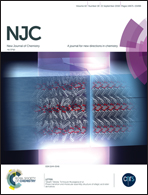Eaton's reagent assisted aromatic C–C coupling of carbazoles for optoelectronic applications†
Abstract
An Eaton's reagent assisted C(sp2)–C(sp2) coupling via the Scholl reaction mechanism was developed to prepare bicarbazoles without using any solvents and catalysts. The resulting biaryl exhibits unique optoelectronic properties as a promising host material of blue phosphorescent organic light emitting diodes, achieving high current efficiency up to 31.7 cd A−1 with ultralow roll-off.



 Please wait while we load your content...
Please wait while we load your content...